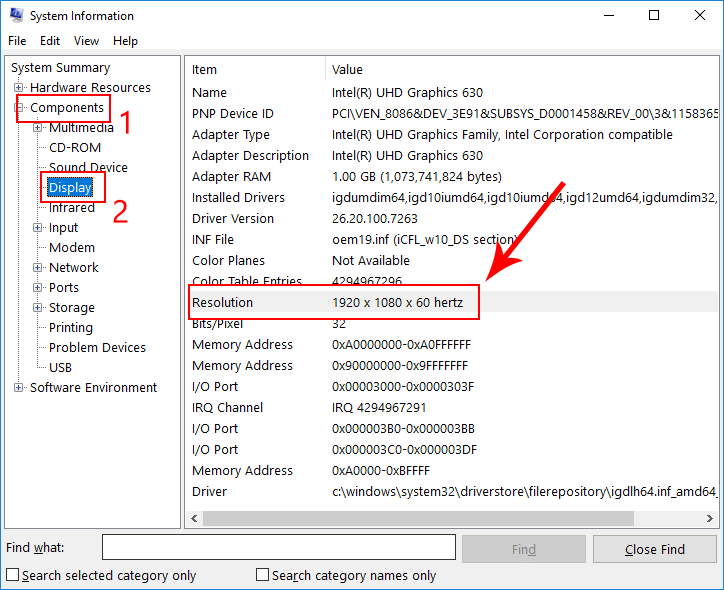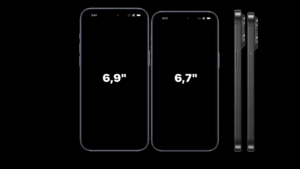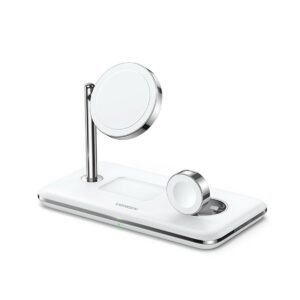60Hz refresh rate is a common standard in displays, but what does it truly mean? This exploration dives into the world of visual smoothness, user experience, and technical specifications behind this widely used refresh rate. From gaming to everyday use, we’ll uncover how 60Hz impacts your viewing experience.
The 60Hz refresh rate, a cornerstone of many displays, dictates how many times per second the image on the screen is updated. This directly affects how smooth motion appears, impacting everything from video playback to gaming. Understanding this fundamental aspect of visual technology is key to appreciating the nuances of different display capabilities.
Impact on User Experience
A 60Hz refresh rate, while a common standard, significantly impacts user experience across various applications. Understanding this impact is crucial for choosing displays and appreciating the trade-offs involved in different refresh rates. From gaming fluidity to video editing precision, the 60Hz rate plays a role in how we interact with digital content.A 60Hz refresh rate means the display updates 60 times per second.
This frequency directly affects how smoothly moving images appear. Lower refresh rates can lead to visible judder and motion blur, while higher refresh rates generally offer a more fluid and immersive experience. Factors like content and individual perception further influence the perceived smoothness of a 60Hz display.
Gaming Experience with 60Hz
The smoothness of gameplay is heavily dependent on the frame rate of the game and the refresh rate of the display. A 60Hz display can provide a generally playable experience for many games, especially those not demanding high frame rates. However, fast-paced action games may exhibit noticeable motion blur or judder, potentially impacting the player’s ability to react to events in real time.
This is particularly noticeable during quick movements, aiming, or tracking fast-moving objects. The trade-off between price and perceived smoothness should be considered when choosing a display for gaming.
Video Editing with 60Hz
For video editing, a 60Hz display is often sufficient for tasks that don’t involve intricate motion analysis or high frame rate video editing. However, if editing video content with higher frame rates (e.g., 120fps or above), the 60Hz refresh rate might limit the ability to accurately assess and manipulate fast movements within the video. This can be especially important for editing action sequences or scenes with significant movement.
The visual clarity and detail of the content during editing processes become crucial.
Factors Influencing Perceived Smoothness
Several factors contribute to the perceived smoothness of a 60Hz display. The game’s frame rate, the display’s response time, and the user’s individual sensitivity to motion blur are key. A higher frame rate coupled with a 60Hz display results in a more fluid experience, while a lower frame rate can lead to more noticeable motion artifacts. The response time of the display, referring to how quickly the pixels can change their state, also impacts the perceived smoothness.
A 60Hz refresh rate is pretty standard these days, but it’s still a factor to consider when looking at new phones like the iPhone 16 International. iPhone 16 International might have some interesting features, but ultimately, the 60Hz refresh rate will likely influence how smooth the scrolling and animations feel. It’s a pretty basic but important part of the overall user experience.
Faster response times generally lead to a smoother experience.
Comparison with Higher Refresh Rates
Higher refresh rates (e.g., 144Hz, 240Hz) offer a significantly smoother experience, especially in fast-paced applications like gaming. This is because the increased refresh rate allows for more frequent display updates, resulting in less motion blur and judder. However, the improvement in smoothness is often accompanied by a higher cost. The jump in visual fluidity from 60Hz to higher rates is often noticeable, especially for players who are accustomed to higher refresh rates.
Impact on Motion Blur
Motion blur is a visual effect that occurs when objects in motion appear slightly blurred. At 60Hz, motion blur is less pronounced than at lower refresh rates, but it’s still present. The blur is less noticeable in stationary scenes, but becomes more evident in fast-paced action. Higher refresh rates mitigate motion blur more effectively. The reduction in motion blur leads to a sharper and more detailed representation of moving objects.
Visual Clarity and Details
Visual clarity and detail at 60Hz are generally sufficient for most tasks. The 60Hz refresh rate provides a clear enough view for most everyday activities. However, the lack of detail in fast-moving objects can become more noticeable compared to higher refresh rates. The difference in visual clarity and detail becomes more significant when dealing with fine details or intricate movements in rapidly changing scenes.
The ability to discern small movements and changes in detail is impacted by the refresh rate.
A 60Hz refresh rate is pretty standard these days, but it’s still a factor to consider when looking at new phones like the iPhone 16 International. iPhone 16 International might have some interesting features, but ultimately, the 60Hz refresh rate will likely influence how smooth the scrolling and animations feel. It’s a pretty basic but important part of the overall user experience.
Technical Specifications and Performance
A 60Hz refresh rate is a common standard in displays, offering a smooth and generally acceptable viewing experience. Understanding its technical specifications and limitations helps users appreciate the trade-offs involved in choosing a display. This section delves into the details of 60Hz, its relationship with FPS, potential performance issues, and the limitations compared to higher refresh rates.
Technical Specifications of 60Hz
A 60Hz refresh rate means the display updates 60 times per second. Each update shows a new image frame. This constant refresh creates the illusion of motion. The display circuitry generates and displays these frames at a specific rate. This involves complex signal processing to ensure smooth transitions between images.
Frames Per Second (FPS) and 60Hz
Frames per second (FPS) dictates how many images are generated per second. A display with a 60Hz refresh rate aims to display a new image frame every 1/60th of a second. Ideally, the game or application generates 60 FPS to match the display’s refresh rate, resulting in a fluid, smooth image. If the game or application produces more frames than the display can refresh, the extra frames are discarded.
Conversely, if the application generates fewer frames than the refresh rate, the display will interpolate frames to fill the gaps, maintaining a 60Hz refresh rate. This is often noticeable in gameplay.
Factors Affecting 60Hz Performance
Several factors can influence the actual performance of a 60Hz display. The processing power of the graphics card is crucial. A powerful card can generate more frames per second, but if the application is not optimized, it might still struggle to meet the 60Hz refresh rate. The display’s internal circuitry also plays a role. High-quality displays are designed to minimize latency and provide consistent frame rendering.
The resolution of the display impacts performance as higher resolutions require more data to be processed, potentially impacting the ability to maintain a consistent 60Hz refresh rate. The overall system’s configuration, such as RAM and storage speed, can affect the frame rate.
A 60Hz refresh rate is pretty standard these days, but it’s still a factor to consider when looking at new phones like the iPhone 16 International. iPhone 16 International might have some interesting features, but ultimately, the 60Hz refresh rate will likely influence how smooth the scrolling and animations feel. It’s a pretty basic but important part of the overall user experience.
Limitations of 60Hz
While 60Hz offers a smooth viewing experience, it has limitations compared to higher refresh rates like 120Hz or 144Hz. In fast-paced games or activities with rapid motion, the slower refresh rate can lead to motion blur or a slight judder effect. This is particularly noticeable in scenarios requiring extremely quick visual updates, such as high-speed racing or action games.
In these cases, a higher refresh rate display provides a more precise and responsive experience.
Advantages and Disadvantages of a 60Hz Display
| Aspect | Advantage | Disadvantage |
|---|---|---|
| Cost | Generally more affordable than higher refresh rate displays. | Higher refresh rate displays are becoming increasingly affordable. |
| Smoothness | Provides a smooth and generally acceptable viewing experience for most applications. | Motion blur or judder may be noticeable in fast-paced content. |
| Power Consumption | Typically consumes less power than higher refresh rate displays. | Power consumption is a minor factor and usually negligible. |
| Compatibility | Widely compatible with most applications and games. | May not provide the same level of responsiveness as higher refresh rates. |
Future Trends and Developments: 60Hz Refresh Rate

Source: shareus.com
The 60Hz refresh rate, while a standard for many displays, is facing challenges and opportunities in the ever-evolving display technology landscape. Advancements in panel technology and the push for higher frame rates are impacting the future of 60Hz displays. Understanding these trends is crucial for anyone working with or considering displays in various applications.The prevalence of 60Hz displays is currently very high, especially in mainstream consumer devices.
However, the demand for smoother and more responsive visuals is constantly growing, leading to a shift towards higher refresh rates. This shift isn’t simply about a desire for higher numbers, but about the demonstrable improvement in user experience these higher rates provide.
Emerging Display Technologies
Current and emerging display technologies are significantly impacting refresh rates. Liquid Crystal Displays (LCDs) remain prevalent, but technologies like OLED and Mini-LED are gaining traction, offering advantages in terms of contrast, color accuracy, and power efficiency. These newer technologies have the potential to enable higher refresh rates without sacrificing other key performance metrics.
Impact on 60Hz Prevalence
The rise of high refresh rate displays is likely to gradually diminish the dominance of 60Hz displays in the consumer market. The improvement in user experience associated with higher refresh rates is a significant factor in this transition. Examples like the increasing popularity of 144Hz and 240Hz monitors in gaming and professional settings highlight this trend.
Higher Refresh Rate Standards
The industry is continually developing and adopting standards for higher refresh rates. Standards like HDMI 2.1 and DisplayPort 1.4 are designed to support these higher bandwidth requirements. This demonstrates a clear industry push towards greater display capabilities.
A 60Hz refresh rate is pretty standard these days, but it’s still a factor to consider when looking at new phones like the iPhone 16 International. iPhone 16 International might have some interesting features, but ultimately, the 60Hz refresh rate will likely influence how smooth the scrolling and animations feel. It’s a pretty basic but important part of the overall user experience.
Industry Evolution, 60Hz refresh rate
The display industry is evolving to accommodate and integrate higher refresh rates. Manufacturers are actively developing new display panels and technologies, and the adoption of standards for higher refresh rates is becoming widespread. This reflects the increasing importance of smooth and responsive visuals in a variety of applications. Companies are recognizing that the experience associated with higher refresh rates is a significant driver of consumer interest and device adoption.
A 60Hz refresh rate is pretty standard these days, but it’s still a factor to consider when looking at new phones like the iPhone 16 International. iPhone 16 International might have some interesting features, but ultimately, the 60Hz refresh rate will likely influence how smooth the scrolling and animations feel. It’s a pretty basic but important part of the overall user experience.
For instance, the introduction of adaptive sync technologies like G-Sync and FreeSync is helping to smooth out the experience even further, while also reducing screen tearing.
Closing Notes
In conclusion, 60Hz refresh rate, while a standard, offers a surprisingly comprehensive viewing experience. Its suitability depends heavily on the application. While it might not be ideal for demanding tasks like high-end gaming, it remains perfectly adequate for many everyday uses. This exploration highlights the key factors to consider when choosing a display, and how 60Hz continues to play a crucial role in modern visual technology.
FAQ Guide
What’s the difference between 60Hz, 120Hz, and 144Hz refresh rates?
The higher the refresh rate, the smoother motion appears. 60Hz is a standard for general use, 120Hz offers a noticeable improvement in smoothness, and 144Hz is often preferred for competitive gaming where minimizing input lag is paramount.
How does 60Hz affect motion blur?
A lower refresh rate like 60Hz can introduce some motion blur, especially with fast-moving objects. Higher refresh rates generally reduce this effect.
What are some common devices that use 60Hz?
Many laptops, desktop monitors, and even some TVs use a 60Hz refresh rate as a standard. The choice often depends on the intended use of the device.
Is 60Hz sufficient for casual gaming?
Yes, 60Hz is usually perfectly adequate for casual gaming. If you’re not a hardcore gamer, you likely won’t notice a significant difference compared to higher refresh rates.




